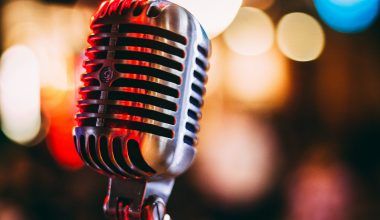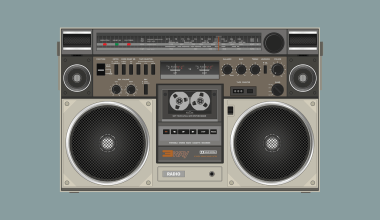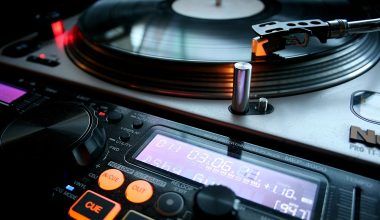Have you ever dreamed of creating your own recording studio? Maybe you’re a budding musician, a podcaster, or someone passionate about sound production. recording studio setup can feel like a big task, but with a little guidance, you’ll be able to create a space that meets your needs and inspires creativity.
Let’s explore how you can design your perfect recording studio setup while keeping it fun, easy to understand, and tailored to your goals.
Why Start a Recording Studio?
First, ask yourself why you want a recording studio. Understanding your purpose will guide your decisions about the equipment, space, and overall setup. Are you recording music, podcasts, or voiceovers? Maybe you’re venturing into sound design or audio engineering. Whatever your reason, it’s exciting to build a space that brings your creative visions to life.
Knowing your purpose will help you prioritize the essential elements of your recording studio setup. For instance, a music-focused studio may require different tools than a podcasting studio. Let’s dive into the basics to get you started.
Finding the Right Space
The first step in setting up your recording studio is finding the ideal location. This could be a spare room, basement, garage, or even a corner of your living space. The key is to pick a quiet area where you can minimize outside noise and focus on your work.
Things to Consider for Your Studio Space:
- Room Size: Larger rooms provide better acoustics, but even a small space can work with the right adjustments.
- Noise Levels: Choose a room that’s far from busy streets, noisy appliances, or other disturbances.
- Accessibility: Ensure the space is easy to access and has enough outlets for your equipment.
- Flexibility: A room with minimal furniture is easier to adapt for your recording needs.
Once you’ve chosen your space, the next step is to think about soundproofing and acoustic treatment.
Mastering Soundproofing and Acoustics
Soundproofing is crucial for a professional recording studio setup. It keeps external noise out and prevents your recordings from disturbing others. Acoustic treatment, on the other hand, ensures your recordings sound clear and balanced.
Soundproofing Tips:
- Seal Gaps: Use weather stripping to seal gaps around doors and windows.
- Add Mass: Heavy curtains, rugs, or furniture can help reduce sound transmission.
- Install Panels: Acoustic panels or foam can absorb sound and prevent echoes.
Acoustic Treatment Basics:
- Bass Traps: Place these in corners to manage low-frequency sounds.
- Diffusers: These scatter sound waves for a more natural feel.
- Absorption Panels: Use these to reduce mid- and high-frequency reflections.
Good soundproofing and acoustics are the foundation of a great recording studio, but the magic really happens with your equipment.
Choosing Essential Recording Studio Equipment
A recording studio setup isn’t complete without the right equipment. Let’s break it down so you know what you need to get started.
1. Computer
Your computer is the heart of your studio. It runs your Digital Audio Workstation (DAW), processes audio, and stores your files. Look for a computer with enough processing power, memory, and storage to handle your projects.
- Mac or PC: Both are great options—choose what you’re comfortable with.
- Specs: Aim for at least 8GB of RAM and a solid-state drive (SSD) for faster performance.
2. Digital Audio Workstation (DAW)
A DAW is software for recording, editing, and mixing audio. Popular options include Pro Tools, Logic Pro, Ableton Live, and FL Studio. Try a few demos to see which one fits your workflow best.
3. Audio Interface
An audio interface connects your instruments and microphones to your computer. It converts analog signals into digital audio and ensures high-quality recordings. Look for one with enough inputs and outputs for your needs.
4. Microphones
Microphones are essential for capturing sound. Here are the two main types you’ll need:
- Condenser Microphones: Ideal for vocals and acoustic instruments.
- Dynamic Microphones: Great for louder sources like drums or amplified guitars.
5. Studio Monitors and Headphones
Accurate monitoring is key to great recordings. Invest in quality studio monitors and headphones to hear your tracks clearly. Avoid consumer-grade equipment, as it often colors the sound.
6. Cables and Stands
Don’t overlook the small stuff! You’ll need XLR cables for microphones, instrument cables, and sturdy stands to hold your gear in place.
Once you have the basics, you can add more specialized equipment based on your goals.
Arranging Your Recording Studio Setup
Now that you have your equipment, it’s time to arrange it in your space. Organization plays a huge role in workflow and creativity.
Setting Up Your Workspace:
- Desk and Chair: Invest in a comfortable chair and a sturdy desk to hold your computer and audio interface.
- Monitor Placement: Place your studio monitors at ear level, forming an equilateral triangle with your head.
- Microphone Positioning: Use pop filters and shock mounts for optimal vocal recordings.
- Cable Management: Keep your cables tidy to avoid tripping hazards and maintain a clean look.
Experiment with different setups to find what feels most intuitive for you.
Creating a Comfortable Atmosphere
A recording studio isn’t just about functionality—it’s also a creative space. Adding a personal touch can make it a place you love spending time in.
Tips for a Cozy Studio:
- Lighting: Use warm, adjustable lighting to set the mood.
- Decor: Add artwork, plants, or posters that inspire you.
- Seating: Include a couch or extra chairs for guests or collaborators.
The more comfortable you feel in your studio, the more productive and creative you’ll be.
Expanding Your Recording Studio
Once you’ve mastered the basics, you might want to expand your studio. This could mean upgrading your gear, adding more instruments, or even building a vocal booth.
Advanced Upgrades:
- MIDI Controllers: Perfect for composing music and controlling your DAW.
- Outboard Gear: Use preamps, compressors, or effects processors for analog sound.
- Additional Mics: Add variety to your collection for different recording scenarios.
Recording and Mixing Tips
With your recording studio setup complete, it’s time to dive into recording and mixing. Here are a few tips to get started:
- Test Levels: Always check your input levels before recording to avoid distortion.
- Layer Tracks: Build your song or podcast by layering multiple tracks.
- Use EQ and Compression: These tools help balance your mix and make it sound polished.
Remember, practice makes perfect. Don’t be afraid to experiment and learn as you go.
Final Thoughts
Setting up a recording studio is an exciting journey. While it might seem overwhelming at first, taking it step by step makes it manageable and fun. Whether you’re recording music, podcasts, or something entirely unique, your studio will be a space where creativity thrives.
So, what are you waiting for? Start building your dream recording studio setup today and let your creativity flow!
For further reading, explore these related articles:
- Loretta Lynn: The Story of the Coal Miner’s Daughter Who Changed Country Music Forever
- Rick Astley: A Pop Music Icon Who Never Gave Up
For additional resources on music marketing and distribution, visit DMT Records Pvt. Ltd..





